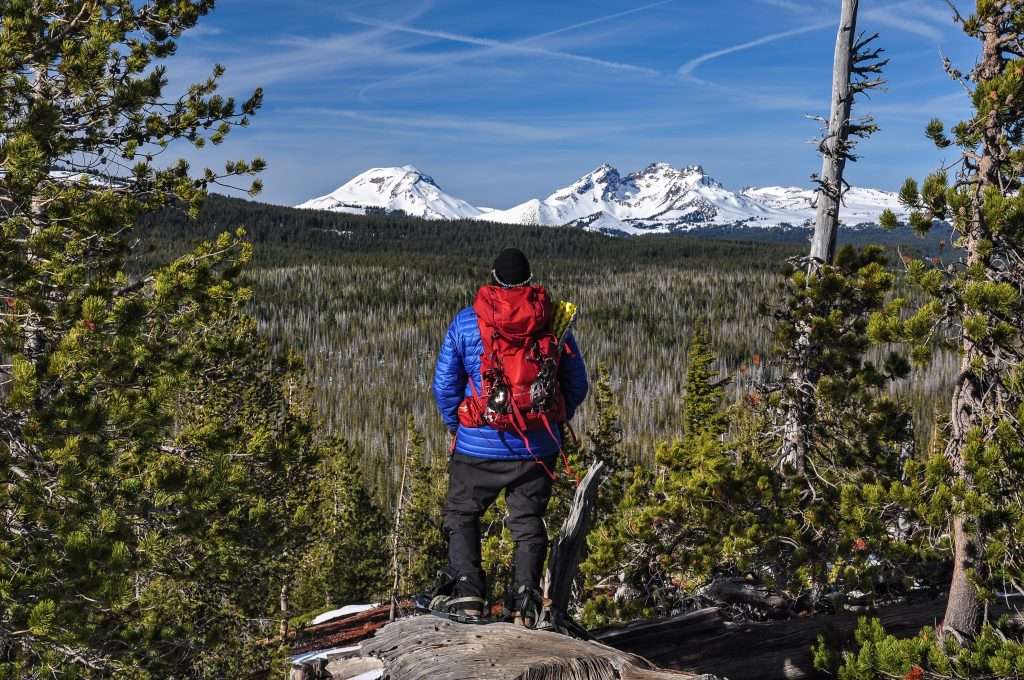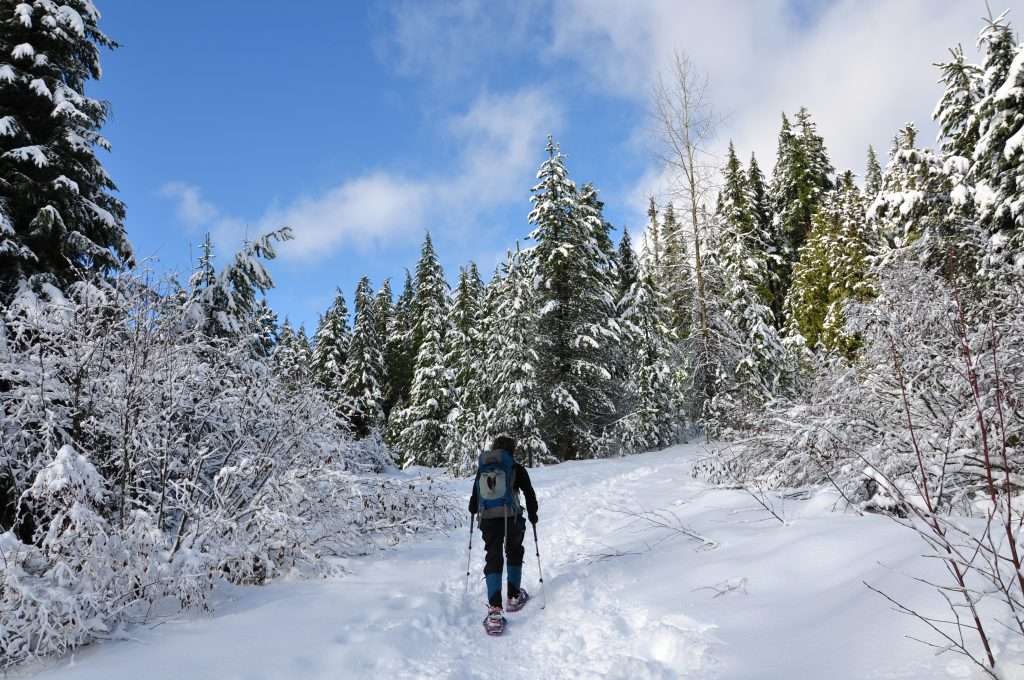By Cheryl Hill, Board Member, Trailkeepers of Oregon When winter snow has buried your favorite trails at high elevations, the Riverside National Recreation Trail #723 along the Clackamas River offers a great alternative. At 1,500 feet elevation, the…
By Cheryl Hill, Board Member, Trailkeepers of Oregon
When you’re longing to stretch your legs in the mountains but the trails are covered in winter snow, what’s a hiker to do? Try snowshoeing!
If you’re not familiar with this winter activity, here’s how it works: You strap a pair of snowshoes over your boots and start walking. The snowshoes distribute your weight over a larger area than your foot, allowing you to walk in the snow without sinking. You can snowshoe anywhere there is snow, but for beginners a good place to start is an Oregon Sno-Park. You will need to buy a Sno-Park parking permit ahead of time. They are sold at DMV offices and many outdoor stores. (Annual permits are $25, 3-day permits $9, daily permits $4.)

Snowshoers who visit Vista Butte near Bend are rewarded with a view of the Three Sisters on a clear day. (Photo by Cheryl Hill)
Make sure you’re dressed warmly, preferably in layers. Rain pants or snow pants plus a water-resistant jacket are best for your outer layer so that you stay dry. (If you end up doing a lot of snowshoeing you may wish to invest in a pair of gaiters to keep fresh fluffy snow from getting into your boots.) You will also want to wear waterproof boots, gloves, and a hat. Bring sunglasses too because even a little bit of sunshine reflecting off the snow can be blinding. As with hiking, you should also bring the ten essentials.
You may want to rent snowshoes the first few times to make sure you like snowshoeing well enough to buy a pair. This is also a good way to see what features you may want to look for when you’re ready to buy. Many outdoor stores and ski rental shops rent snowshoes. Call ahead to check on prices and availability. Bring along your summer hiking poles, but be sure to put on the plastic snow-baskets that came with them or the poles will sink deep into the snow. If you don’t own a pair of hiking poles, ask about renting them. They’re immensely helpful for stability when snowshoeing.
You can snowshoe in all weather. Clear sunny days will allow you to enjoy far-reaching views. Snowy days allow you to experience the beauty of snow accumulating on trees. Be aware, though, that even with snowshoes sometimes the condition of the snow is such that you may sink through a crusty top layer when you put your weight down.

Snowshoeing the Crosstown Trail near Government Camp. (Photo by Cheryl Hill)
Routes starting from sno-parks are usually marked by blue diamonds high up on a tree. If there is a groomed cross-country ski track (such as at Trillium Lake) make sure you do not walk there. Stick to the snowshoers’ route.
Where should you go your first time? A good beginner’s route on Mount Hood is the five-mile Trillium Lake loop. The route is easy to follow, but it’s very popular so arrive early if you can. Near Bend try the four-mile out-and-back route up Vista Butte on a clear day for spectacular views of Mt. Bachelor and the Three Sisters. For more inspiration pick up a copy of Snowshoe Routes: Oregon, by Shea Andersen.
Some additional things to keep in mind:
- Check road conditions before you leave home.
- Some winters produce more snow than others. During drier winters, the lower-elevation Sno-parks and trails may be snow-free.
- Sunset is early in the winter, so make sure to plan accordingly.
- You will not be able to travel at the same pace as you hike on bare ground, so don’t tackle a long route unless you get an early start and you’re confident in your abilities.
- Check your local outdoor store for winter recreation maps for Mount Hood, Santiam Pass, and Willamette Pass.
Cheryl Hill: cheryl.hill@trailkeepersoforegon.org
